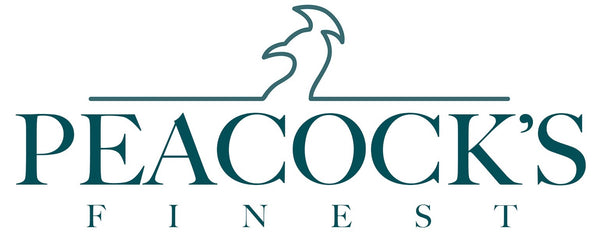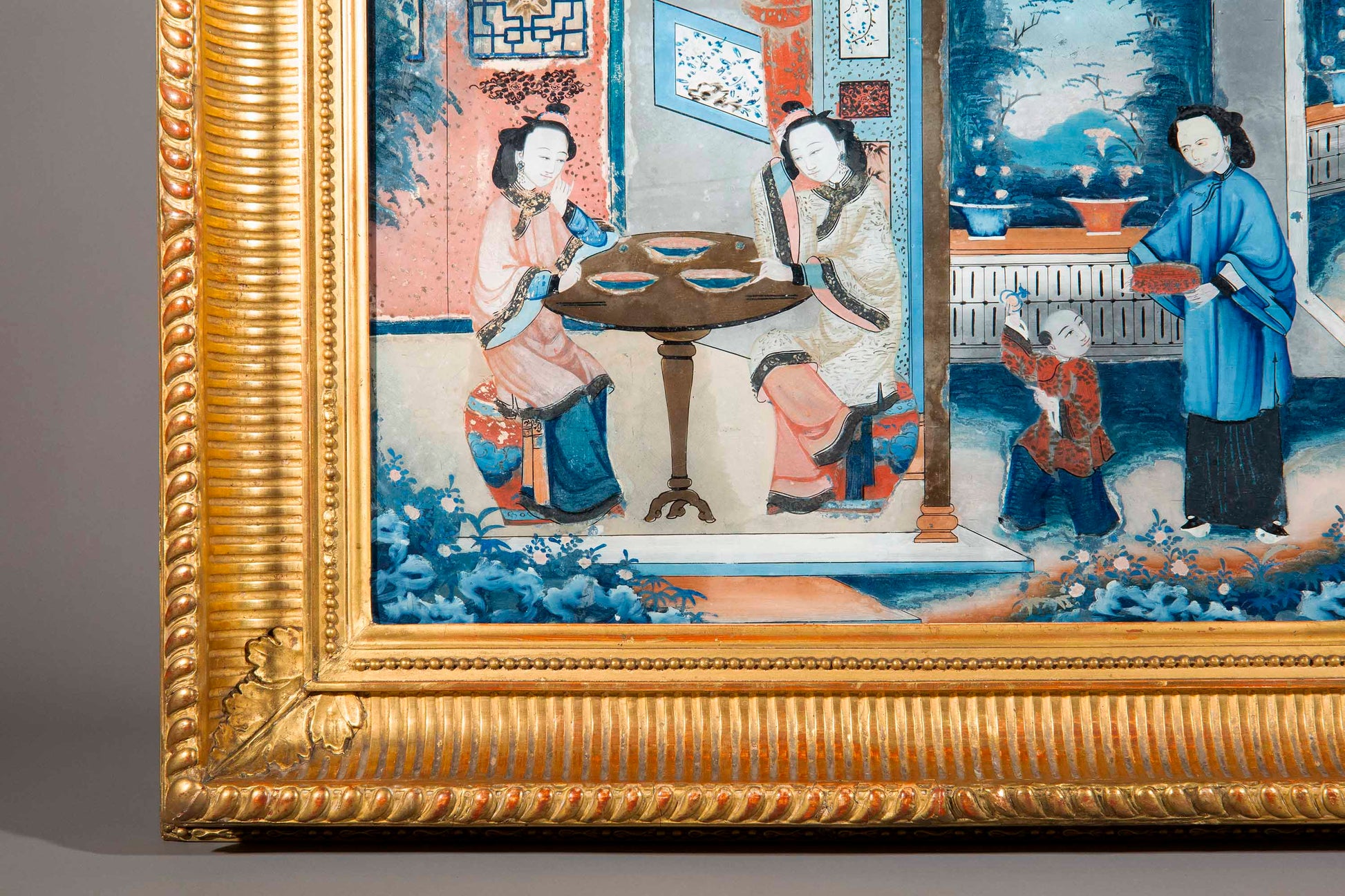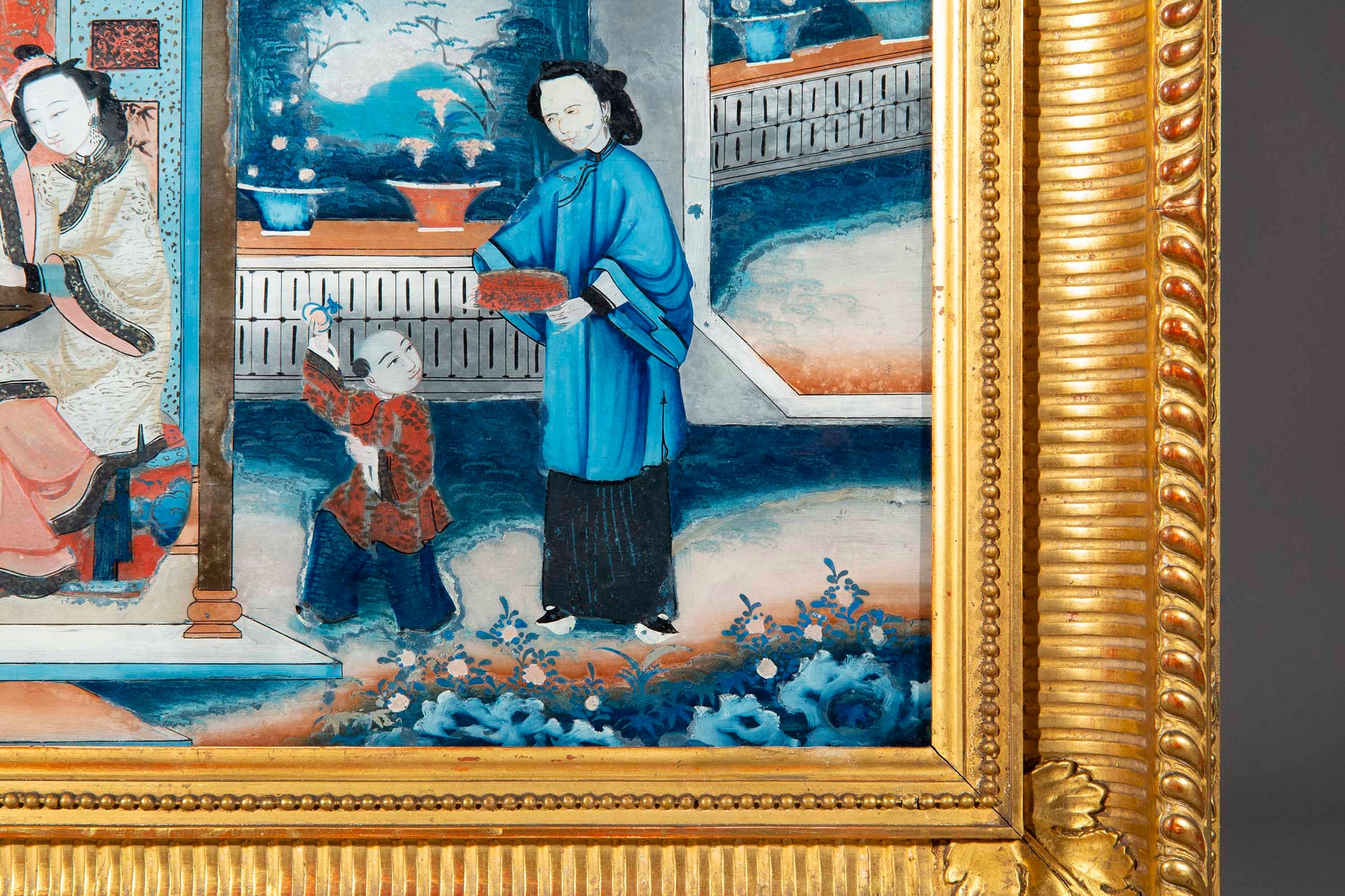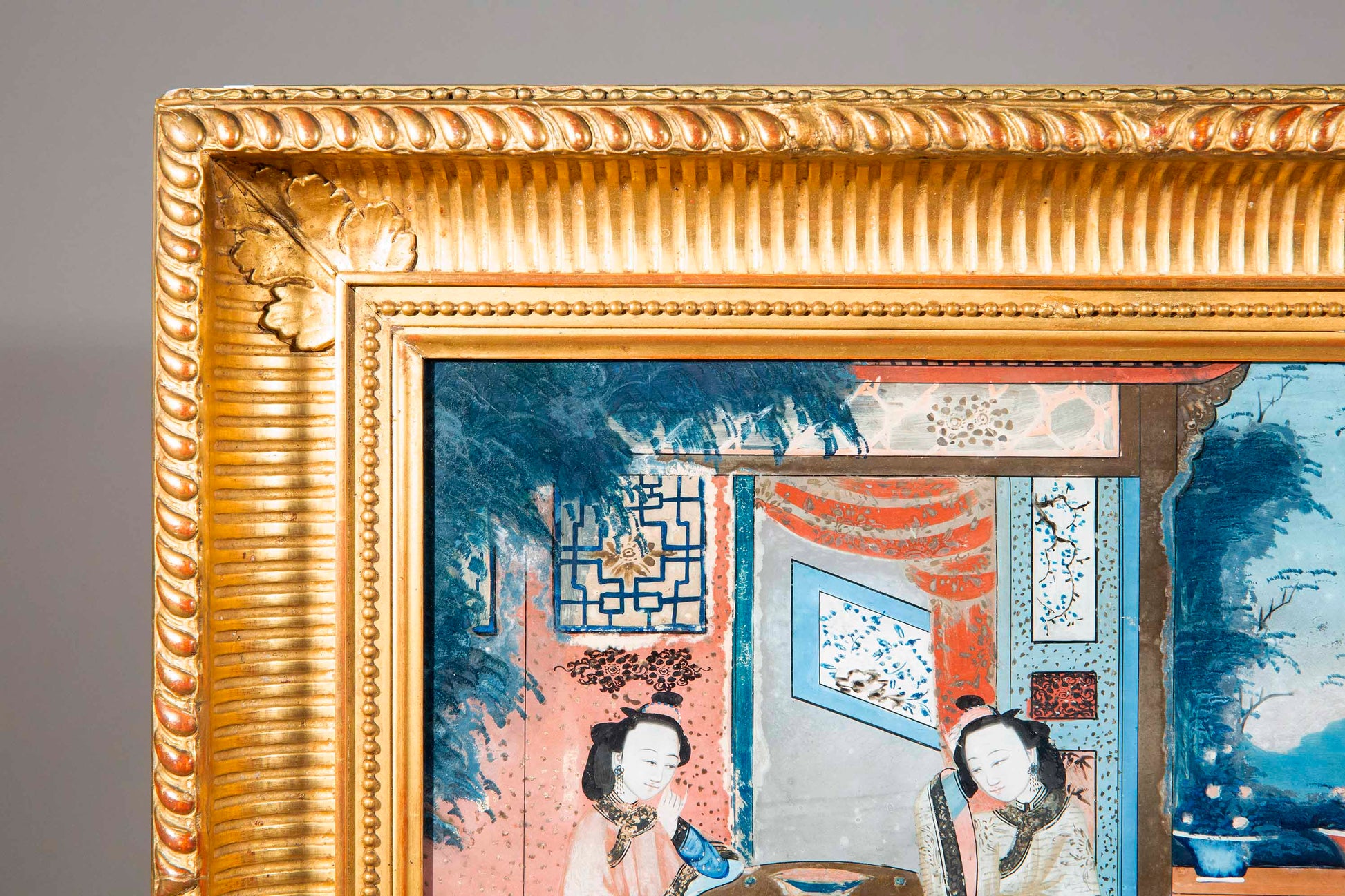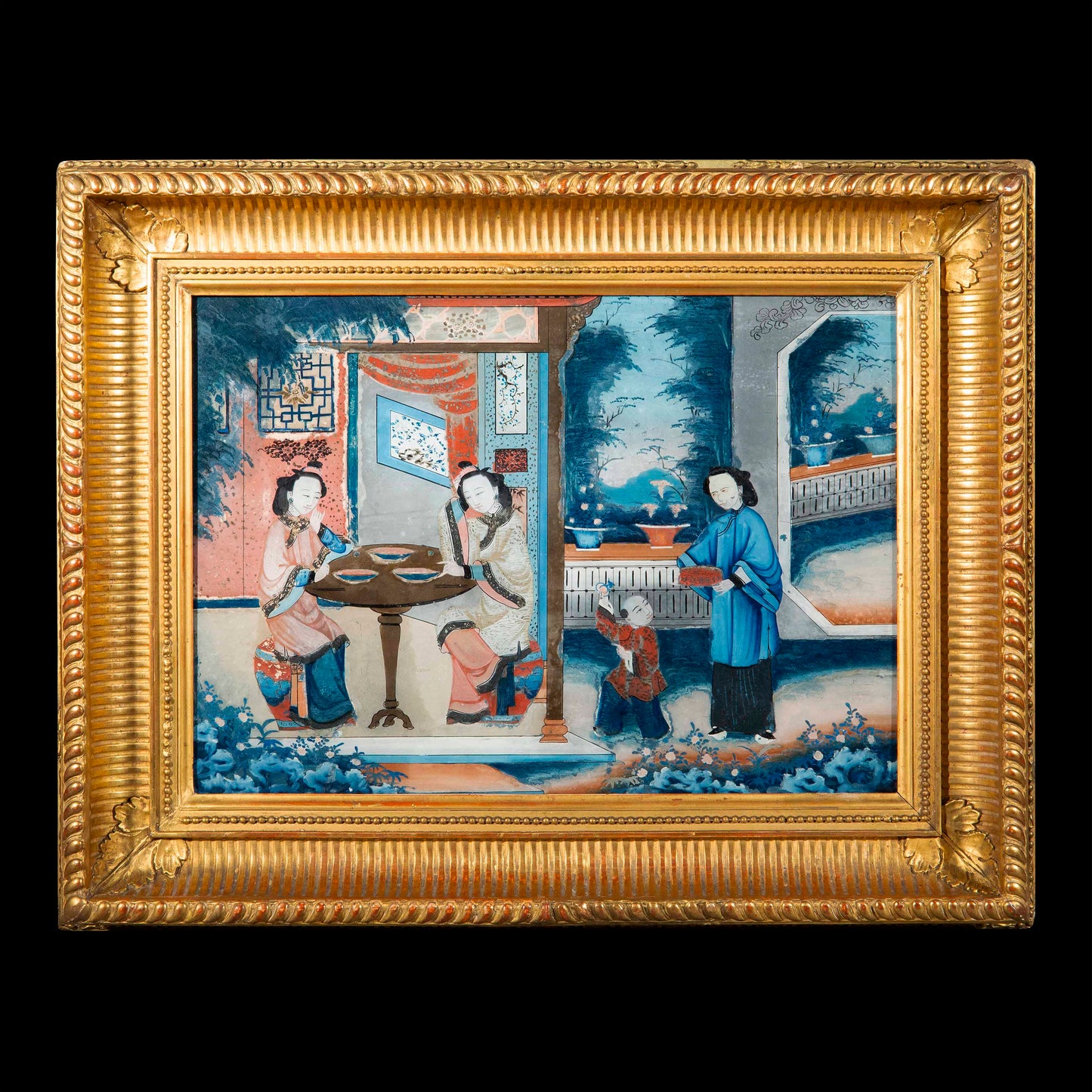
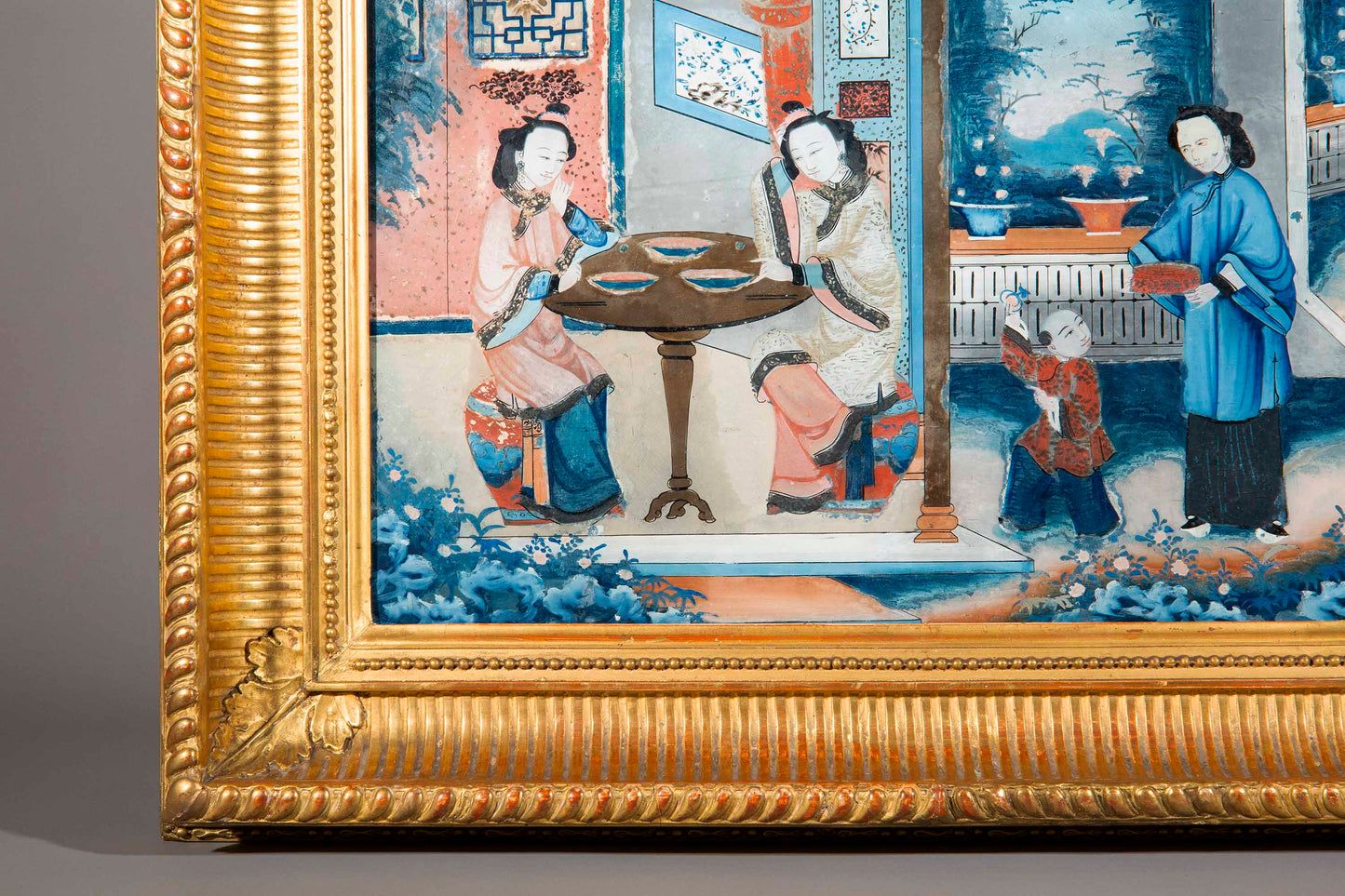
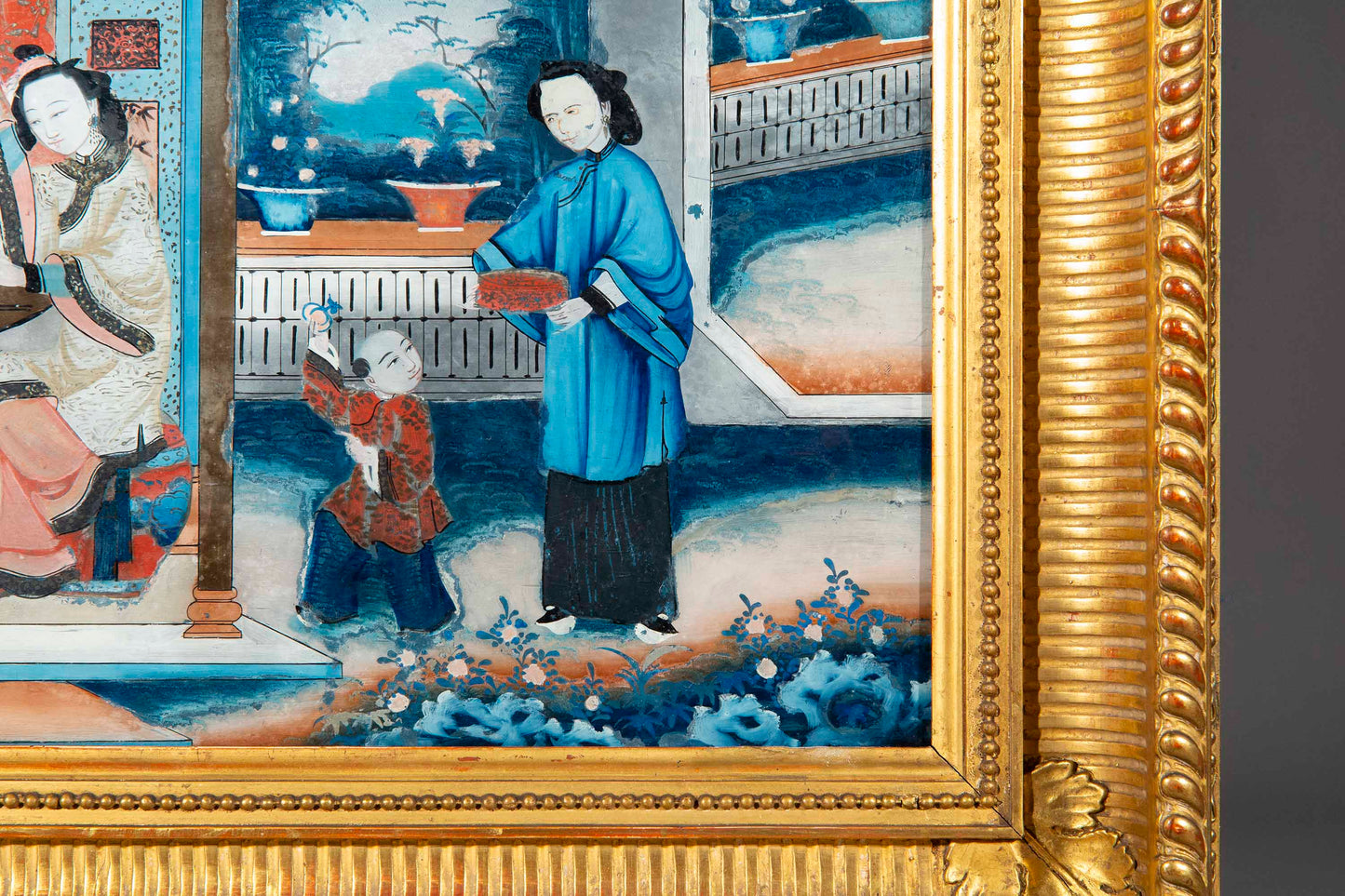
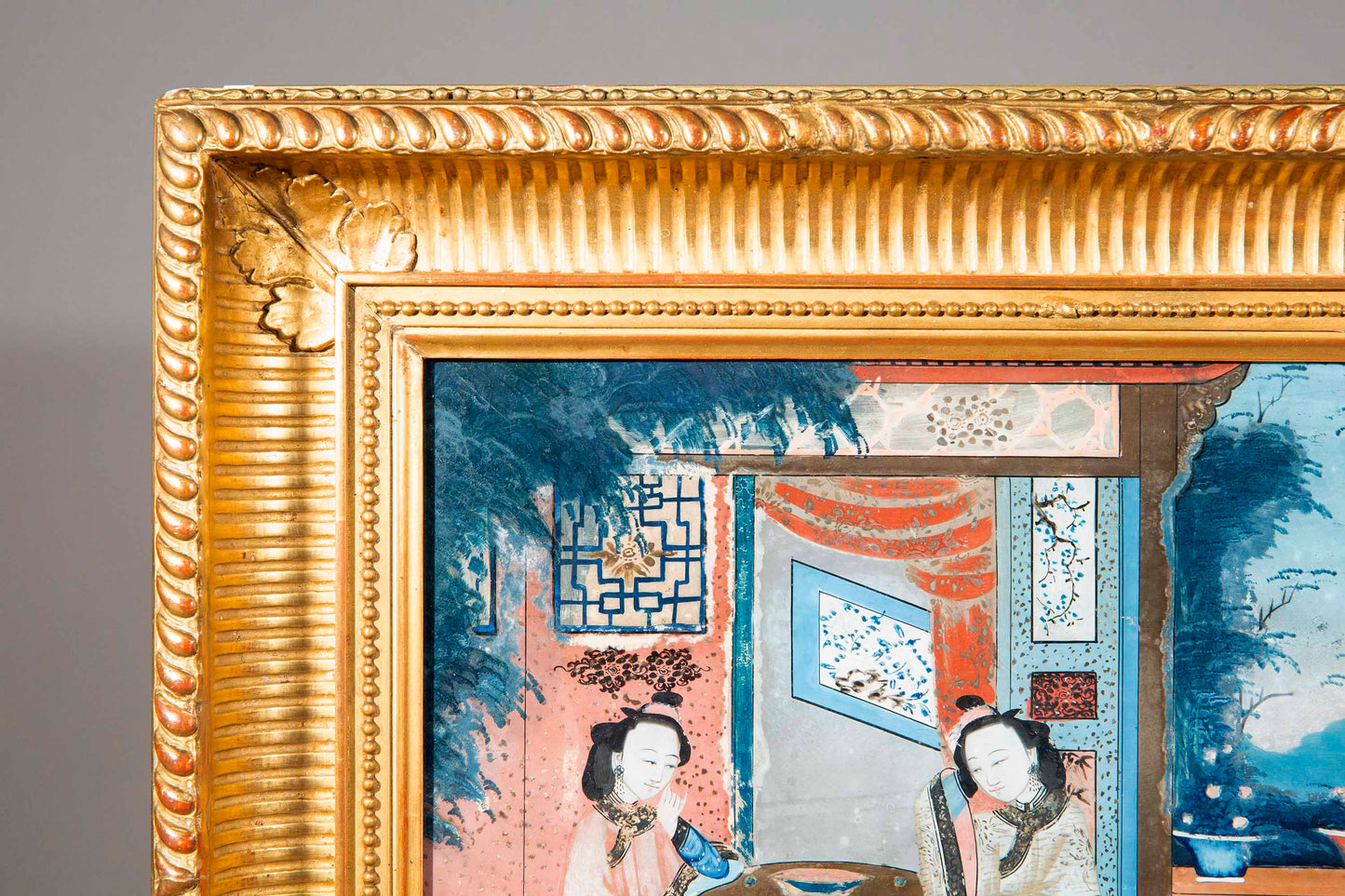
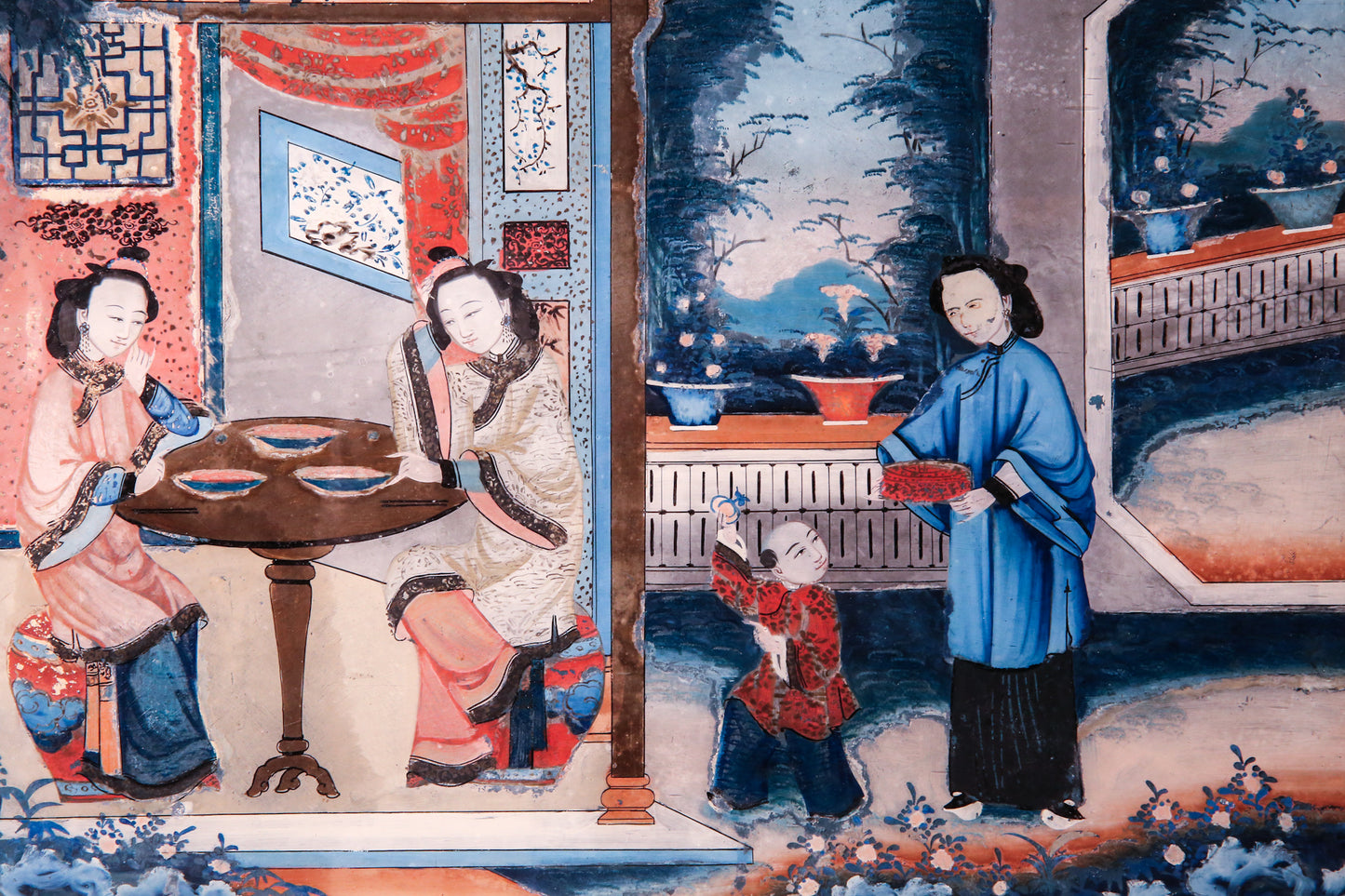
An early 19th century Qing dynasty reverse painting on glass, in a very fine late 19th century giltwood frame. Canton, circa 1830–50.
Why we like it
Superbly decorative and bright, whimsical motifs evoking the West's infatuation of the exotic Far East.
Artistic and historical context
Reverse glass painting, popular in 18th- and 19th-century Canton, China, involved painting on the back of a glass sheet in reverse order. Artists began with intricate details like facial features or patterns, followed by larger background areas, so the image would appear correctly when viewed from the front. This technique created vibrant, glossy artworks prized for their clarity and rich colour. Canton, a major trade hub, produced these paintings for both local and European markets, blending Chinese motifs with Western themes to cater to foreign tastes. Subjects ranged from Chinese landscapes and mythology to biblical and European-inspired scenes. The precision required for this art highlights the skill of Cantonese artisans and reflects the cultural exchanges of the time. Large-sized reverse glass paintings from 18th- and 19th-century China are extremely rare, primarily because of the challenges in obtaining large, flawless glass panes. As China lacked the technological capability to produce such glass domestically, artisans relied on imported sheets from Europe, where production techniques allowed for larger sizes. The expense and logistical difficulty of importing large panes meant that most reverse glass paintings were modest in scale. These constraints made large works not only rare but also highly valued as exceptional examples of the art form, combining imported European materials with the extraordinary skill of Cantonese artists.
Dimensions
Frame
Width: 66.5 cm / 26.2”
Depth: 6.5 cm / 2.5”
Height: 52.5 cm / 20.7”
Artwork
Width: 49 cm / 19.25”
Height: 34 cm / 13.5”
